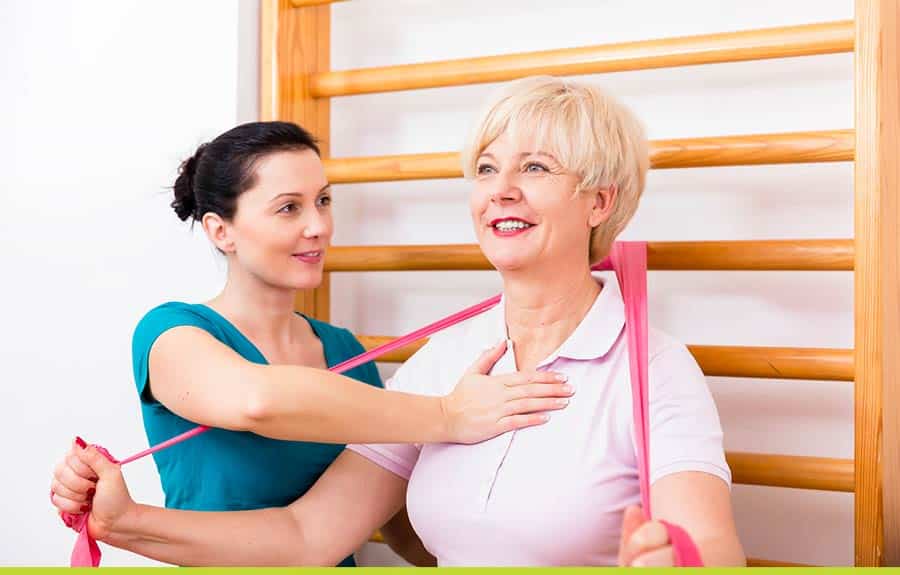Many myths related to understanding the differences between the sexes. This has held women back from participating in activity and sport for many years. It took 88 years before women were even allowed to participate in the Olympic marathon. It was believed that they were not strong enough to complete a marathon and that the endurance required would damage their reproductive organs. Crazy I know!! Although differences exist between men and women there are many similarities.
Some of the Anatomical Differences include:
- The female organs
- Smaller bone structure
- Hormonal differences
- Body composition differences in fat and muscle mass.
These differences contribute to the incidence and prevalence of injury and disease related to exercise in women.
What are the Key Physiological Differences to be considered when it comes to Exercise & Sport?
- Women have less muscle mass and their average body fat composition is 26% compared to 14% in males.
- This greater muscle mass in males is due to the predominant effect of the androgen hormones, whereas estrogen which is predominant in females results in increased body fat.
- Lower testosterone levels in women.
- Lower total oxygen carrying capacity of blood.
- Smaller Heart and increased Heart Rate.
- Lower Maximum Aerobic Capacity.
- Smaller Thorax – lower max breathing capacity.
Psychological stress and Exercise levels
It’s well established that psychological stress can affect hypothalamic (regulates body temperature and hormone release) function. Some sports women can suffer high levels of psychological stress either related to exercise or other reasons such as work, family and relationships. Excessive stress may lead to the development of menstrual cycle irregularities if you are involved in high levels of exercise.
However, normal menstruation often returns with a reduction in exercise. Menstrual disturbances are related to an energy imbalance where a higher level of exercise expands greater energy levels.
Menstrual Cycle Irregularities? – Complications For Exercise.
- Reduced Bone mass – energy imbalances and poor nutritional intake can have an impact on lifelong bone health. Bone health is lost in the first two or three years following menstrual disturbance.
- Reduced fertility – fertility may be reduced amongst intensely exercising females. A good indication that ovulation has occurred during a particular cycle is the presence of either pre-menstrual symptoms at the end of the cycle or mid-cycle ovulation pain. Ovulation can be confirmed by measuring body temperature. Typically, this rises 0.5 degrees at the time of ovulation and remains elevated during the luteal phase. However, it should not be assumed that because a woman has been amenorrheic (1 or more menstrual cycles missed) for some time that she is necessarily infertile. If pregnancy is the goal, ovulation and a normal menstrual cycle can usually be induced by reducing the level of exercise and increasing the level of body fat.
- Post Menopausal Osteoporosis – Reduced bone mass can increase the risk of the development of post menopausal osteoporosis in sportswomen if bone loss cannot be reversed once menses return. The most important way of preventing post menopausal osteoporosis is to achieve a high peak bone mass. This is usually achieved around late-teens-early-twenties depending on factors such as genetics, nutrition (especially calcium intake, Vitamin D, and energy balance), exercise and hormonal status.
Female’s who exercise regularly gain many health benefits from their activity. However, they should be aware of some Injuries that they are at increased risk of.
- Stress fractures – This is more common in amenorrheic women than those who are menstruating normally. However, a stress fracture can also be related to overtraining and malalignment of the joints.
- Patellofemoral Pain Syndrome – An increased Q-angle (the angle from the hips to the knees) caused by slanting of the thigh bone can increase the likelihood of women to patellofemoral pain. This places excessive stress on the knees when exercising.
- Anterior cruciate ligament rupture – Women are up to eight times more likely to suffer an anterior cruciate ligament rupture than males. Many intrinsic and extrinsic factors contribute to this increased risk:
- Joint Laxity
- Hormonal Influences
- Limb alignment
- Conditioning
Women may be more predisposed to anterior cruciate ligament injuries during the ovulatory phase of the menstrual cycle.
How can Physiotherapy help the Active Female?
- Reduce the risk of Osteoporosis – Osteoporosis can often go undiagnosed until someone has a fall and fracture. Both men and women can maintain healthy bone structure through good nutrition and exercise. Exercise programs can be designed by your physiotherapist to maintain healthy bone tissue and reduce the risk of falling. Bone reacts in a similar way to muscle with the correct exercise, it gets stronger!
- Musculoskeletal Assessment – It is important for active women to get a full musculoskeletal assessment by their physio to reduce the risk of injury. Any movement dysfunctions, postural malalignments or weaknesses can be identified and addressed through an individualised program to reduce the risk of injury.
Get in Touch to discuss how we can help you if you are an active female dealing with pain or are looking to reduce injury risk and stay healthy.
Part 2 of this Blog will discuss Exercise and Pregnancy.



